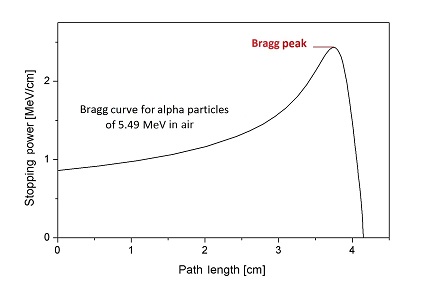Lab work on Medipix
Medipix is a family of pixel detector read-out chips for particle imaging and detection developed by the same-name collaboration. The Medipix concept is that the detector works like a camera, registering each individual particle hitting the pixel matrix, when its electronic shutter is open. This allows obtaining high-resolution, high-contrast, and low-noise images.
The Lab Work is based on the education kit developed by the Czech company Jablotron in cooperation with the Institute of Experimental and Applied Physics (IEAP) of the Czech Technical University in Prague. The IEAP-developed Pixelman software is used for detector data visualization and processing.
The main task of the Lab Work is to teach students how to work with a pixel detector, to set the measurement parameters, to visualize and analyze the data obtained. In addition, as a result of the Lab Work, the students' knowledge of the basics of nuclear physics is consolidated. Thus, the Lab Work is useful for a wide range of students and specialists working in the field of nuclear energy and particle physics, both engineers and scientists.
Prerequisites:
- Knowledge of school mathematics and physics.
- Basics of computer knowledge: MS Windows, MS Office, plotting charts in MS Excel or Origin (desirable).
Before starting the Lab Work, students are required to do the general safety and radiation safety training.
Lab Work Structure:
|
1. Introduction
Result: general idea of ionizing radiation (radioactive decay, types of radiation, classical and relativistic physics).
|
 |
|
2. Introduction to the detector
Result: overview of the main types of particle detectors and the Medipix MX-10 detector. Skills in working with the Pixelman software. Overview of the radiation sources used in the Lab Work.
|
 |
|
3. Introduction to weak radiation sources
Result: understanding of the decay processes occurring in each of the three sources (uranium glass, thorium rod, potassium sulfate). Consolidation of skills in working with the Pixelman software.
|
 |
|
4. Introduction to the 241Am source
Result: understanding of the decay processes occurring in 241Am source. Concept of the particle beam collimation.
|
 |
|
5. Alpha particles energy loss in air
Result: understanding of the alpha particles energy loss mechanism in air. Concept of average range. Skills in range calculation. The dependence of range on the particle energy. Specific energy losses.
|
 |
|
6. Alpha particles energy loss in polyethylene and aluminum
Result: the idea of how alpha particles interact with matter. Skills in estimating the thickness of a substance by alpha particles energy loss.
|
 |
|
7. Gamma radiation from 241Am source
Result: deeper understanding of the decay processes occurring in 241Am source. Understanding of the mechanism of gamma ray registration by the detector, dependence of photon registration probability on its energy. Concept of interaction cross-section, skills in evaluating the cross-section.
|
 |
|
8. Gamma radiation applications
Result: concept of the radiography. Skills in calculating the linear gamma-ray attenuation factor. Concept of X-ray fluorescence analysis.
|
 |
|
9. Natural background radiation
Result: general idea of natural radiation and its main sources. Radon around us.
|
 |
|
10. Radioactive sources: OSAI, OSGI, ORIBI
Result: overview of Pu-239, Na-22, Co-60, Cs-137, Sr-90 radionuclides and their decay series. Basic understanding of the motion of beta particles in a magnetic field.
|
 |
Full course is designed for 1 week. However, lab works duration highly depends on student's level and basic skills. Depending on that the amount of the lab works in the course may vary. It is also possible to shorten the course by removing some lab works.











